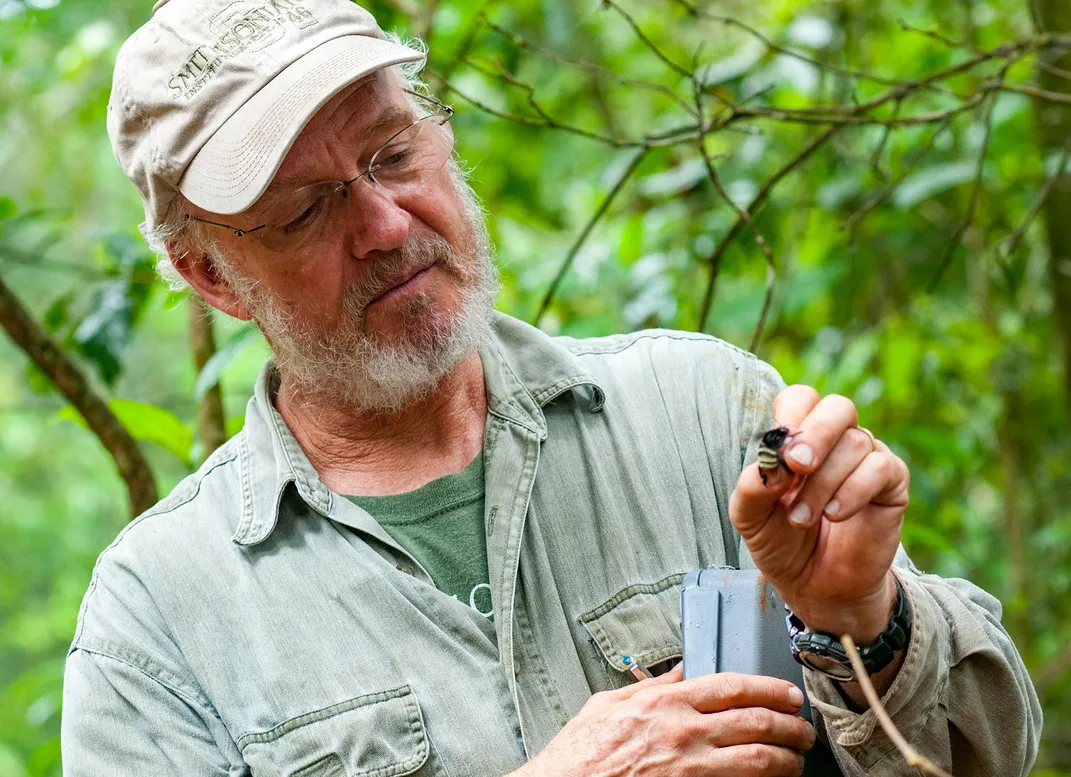With Smart Planning, Coffee and Bees Can Survive Climate Change
In a new study, a Smithsonian scientist says coffee-growers have options
/https://tf-cmsv2-smithsonianmag-media.s3.amazonaws.com/filer/aa/2e/aa2e1544-1662-4b5e-9ea2-edac6c7bec99/istock-512042857.jpg)
Farmers, policymakers and scientists around the world are preparing for the effects of manmade global climate change. In the tropics, they are trying to understand what will happen to populations of bees as temperatures rise and rainfall patterns change. Bees are necessary to pollinate many commercial crops. Without them, some crops could fail completely. In particular, coffee.
A new paper co-authored by a Smithsonian scientist and published today in the Proceedings of the National Academy of Sciences may have up-ended expectations for the future of tropical bees and the coffee crop that depends on them.
David Roubik, an entomologist and senior staff scientist for ecology, behavior and evolution at the Smithsonian Tropical Research Institute in Panama, believes that previous warnings that the bees are doomed are mistaken. By using an improved modeling method that incorporates more data and accounts for topography, he and an international team of bee experts have found that there is enough resilience among tropical bees in Panama to allow coffee plants to be pollinated in many areas even as global warming events take effect.
"The baseline threat is it gets warmed and if you're adapted to being in a certain kind of thermal zone, you move up the slope" towards cooler temperatures, says Roubik. "Or you adapt, or you go bye-bye."

By using higher-resolution data and accounting for topography, Roubik now believes that the effects will be mixed. As plants, humans and bees adapt to warming temperatures, pollination should still be able to take place in many areas. And coffee—a key crop in much of the tropics—should still be viable.
"Coffee is one of those plants that can pollinate itself and does produce some fruit with no animals going between the flowers," Roubik says, "but when you do have things carrying pollen between plants then production is quite a bit greater. The fruit is bigger and heavier if it is pollinated that way."
The key will be for humans to plan ahead and ensure that there is some type of habitat remaining other than buildings and agriculture. Bees need a place to live and they need year-round pollen sources other than just the crops that humans like them to pollinate. In addition to the many native species of tropical bees, this perscription also includes making accommodations for the invasive Africanized honey bee, AKA killer bee.
While killer bees are a serious threat to humans when angered, they have become extremely important pollinators of crops in Central and South America.
"The killer bee, which is everywhere in Latin America, they need to nest in a tree hollow and if there are no trees then they aren't going to be in the area," Roubik says. "You can keep them in hives but nobody does that."
Killer bees are so dangerous to handle that very few beekeepers are willing to deal with them in hives.
/https://tf-cmsv2-smithsonianmag-media.s3.amazonaws.com/filer/a5/f4/a5f4d746-a7e9-4253-8cb5-186647d626d2/rainbow_in_boquete_2.jpg)
In all of the scenarios that the paper describes for different regions, at least five species of bees would survive in areas that would still be suitable for growing coffee. In roughly half of the areas, ten species of bees were left. Global climate change will make some places unsuitable for growing coffee even if bees are still present.
"We can even point out that certain areas are not going to be any good at all for coffee production," Roubik says. "When it's a lose-lose situation, we can certainly say 'don't try to grow coffee there.' Grow something else there because it's not going to work out."
One of the problems that Roubik and his colleagues found with past research was that the data modeling did not fully account for real-world topography. The studies assumed the land was flat, which means that the real area of land surface was inaccurate.
"Think of a pup tent," Roubik says. "The area of the slanted top is a lot more than the base. But the modelers were looking at the area as if it was just the base."
Many higher-quality varieties of coffee are grown under shade. Roubik thinks that as climate changes the mix of available pollinators, coffee-growers will switch to planting new species of shade trees that also provide good habitat for bees.
The previous resolution level for studying coffee plants and climate change involved looking at areas of a hundred square kilometers.
"Their resolution was a ten-by-ten kilometer area," Roubik says. "Our resolution was one-by-one kilometer. So we want to have better and better models and they do become a little bit better topographically. When it's a mountain range, get real guys."
/https://tf-cmsv2-smithsonianmag-media.s3.amazonaws.com/accounts/headshot/JacksonLanders.jpg)
/https://tf-cmsv2-smithsonianmag-media.s3.amazonaws.com/accounts/headshot/JacksonLanders.jpg)